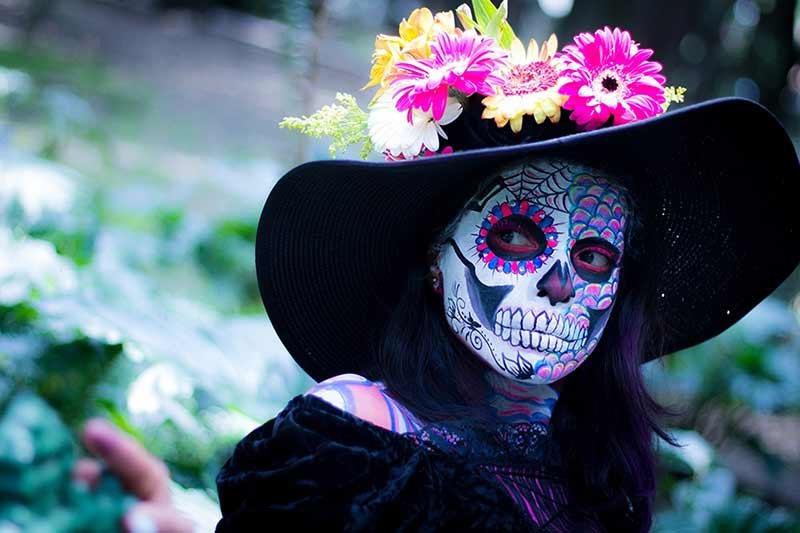The Day of the Dead, or “Día de los Muertos” in Spanish, is a vibrant and culturally rich Mexican holiday celebrated with great enthusiasm and joy. In this article, we will explore the origins, cultural significance, and various traditions associated with this unique and colorful festival.
1. What is the Day of the Dead
The Day of the Dead is a Mexican holiday that combines indigenous Aztec beliefs with Catholicism, creating a unique fusion of traditions. It’s a period during which families come together to pay tribute to and commemorate their departed loved ones.
2. Historical Origins
The origins of this celebration can be traced back to the Aztec civilization, where it was initially celebrated in the ninth month of the Aztec calendar. With the arrival of Spanish conquistadors, the holiday was merged with the Catholic All Saints’ Day and All Souls’ Day, which take place on November 1st and 2nd.
3. Cultural Significance
Día de los Muertos is not a somber occasion but a vibrant and joyful one. It is believed that during this time, the spirits of the deceased return to the world of the living to be reunited with their families. It’s a celebration of the circle of life and death.
4. Celebration Dates
The Day of the Dead is celebrated on November 1st (All Saints’ Day) and November 2nd (All Souls’ Day). Families often dedicate the first day to remembering deceased children (Día de los Inocentes) and the second day to remember deceased adults.
5. Ofrendas and Altars
One of the central customs of this celebration is the creation of ofrendas, or altars, in homes and cemeteries. These altars are adorned with photographs of the departed, their favorite food and beverages, candles, incense, and marigold flowers.
6. Calacas and Calaveras
Calacas are whimsical and brightly colored skeleton figurines often used to decorate altars and festivities. Calaveras, on the other hand, are satirical poems or drawings that humorously depict the living.
7. Sugar Skulls
Sugar skulls, or “calaveras de azúcar,” are intricately decorated candies made of sugar. They are often personalized with the names of the deceased and used as offerings on ofrendas.
8. Marigolds and Cempasúchil
Marigold flowers, known as “cempasúchil,” are a symbol of death in Mexican culture. They are believed to guide the spirits of the dead to their families during the celebration.
9. Traditional Foods
Traditional dishes play a significant role in the Day of the Dead celebrations. Families prepare the deceased’s favorite foods and share them during the festivities. Some common dishes include tamales, pan de muerto (bread of the dead), and mole.
10. Music and Dancing
Music and dancing are integral to the celebrations. Mariachi bands and traditional Mexican music fill the air, and families often dance in cemeteries to honor their loved ones.
11. Face Painting
During this festive time, it’s common for people, especially children, to have their faces painted to resemble calacas or calaveras.
12. Regional Variations
While the Day of the Dead is celebrated throughout Mexico, various regions have their unique customs and traditions, adding diversity to the festivities.
13. Contemporary Adaptations
In recent years, the Day of the Dead has gained recognition and popularity worldwide. It has inspired art, music, and cultural events far beyond Mexico’s borders.
14. Misconceptions and Stereotypes
There are often misconceptions about the Day of the Dead, with some associating it with Halloween. It’s essential to understand the cultural and historical distinctions between the two celebrations.
15. Conclusion: Honoring the Ancestors
The Day of the Dead is a time to remember and celebrate the lives of those who have passed away. It is a beautiful and profound tradition that allows families to connect with their ancestors and keep their memories alive.
Day of the Dead FAQs
1. Is the Day of the Dead the same as Halloween?
No, the Day of the Dead is a Mexican tradition that differs significantly from Halloween. While both occur around the same time, they have distinct cultural and historical backgrounds.
2. How do people celebrate the Day of the Dead?
People celebrate by creating ofrendas, visiting cemeteries, painting their faces, and enjoying traditional food, music, and dancing.
3. Are there regional variations in how the Day of the Dead is celebrated?
Yes, different regions of Mexico have unique customs and traditions associated with the Day of the Dead, making it a diverse and culturally rich celebration.
4. Can people of other cultures participate in the Day of the Dead celebrations?
Absolutely. The Day of the Dead has become a global phenomenon, and people from various backgrounds are welcome to join in the festivities and learn about its cultural significance.
5. What is the significance of marigold flowers during the Day of the Dead?
Marigold flowers, or cempasúchil, are believed to guide the spirits of the deceased to their families, serving as a vibrant and symbolic element of the celebrations.
YOU MIGHT ALSO LIKE:-
Chicago woman becomes world’s oldest skydiver at 104: Age is just a number
Alien Autopsy Video Goes Viral: Mexican Parliament’s Mind-Blowing Disclosure!
Inspiring Story of a Dedicated 90-Year-Old Woman Retired After 74 Years of Work
Michael Gambon: The Enigmatic Albus Dumbledore of Harry Potter Fame
Why Alexandra Grant’s Late-Life Romance with Keanu Reeves is the Ultimate Relationship Goal
Heath Streak: A Legendary Zimbabwean Cricketer








Pingback: Tom Cruise's Mission Impossible 7 Flops At The Box Office - ViralyX
Pingback: Taylor Swift’s Fan Dies Suddenly At Music Concert - ViralyX
Pingback: 7,000-Year-Old Fossils Were Found In Melting Snow In Canada - ViralyX
Pingback: Inside Kantara: The Indian Movie Making Waves In Hollywood! - ViralyX
Pingback: The Web Telescope Has Taken Amazing Pictures Of The Milky Way Galaxy & Provided New Research - ViralyX
Pingback: Stargazer's Delight : Unveiling The Mysteries Of The Geminid Meteor Shower - ViralyX
Pingback: The Rarest & Richest Ancient Tomb Ever Found In Bulgaria - ViralyX